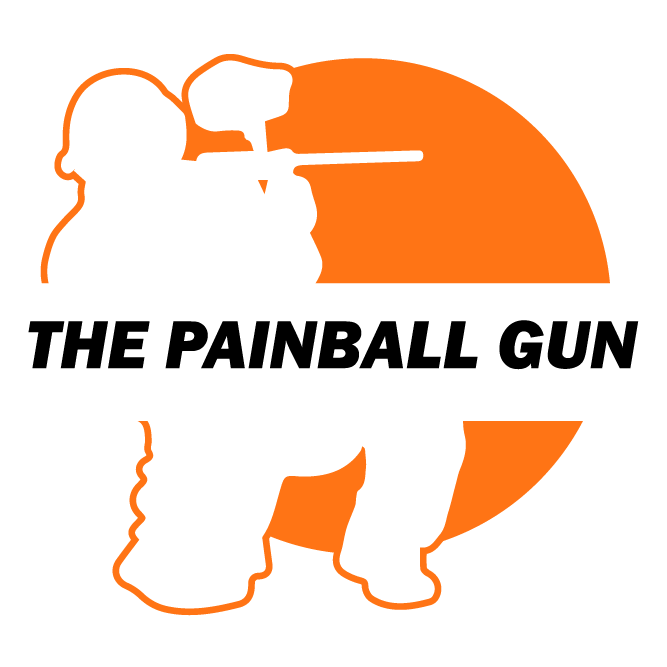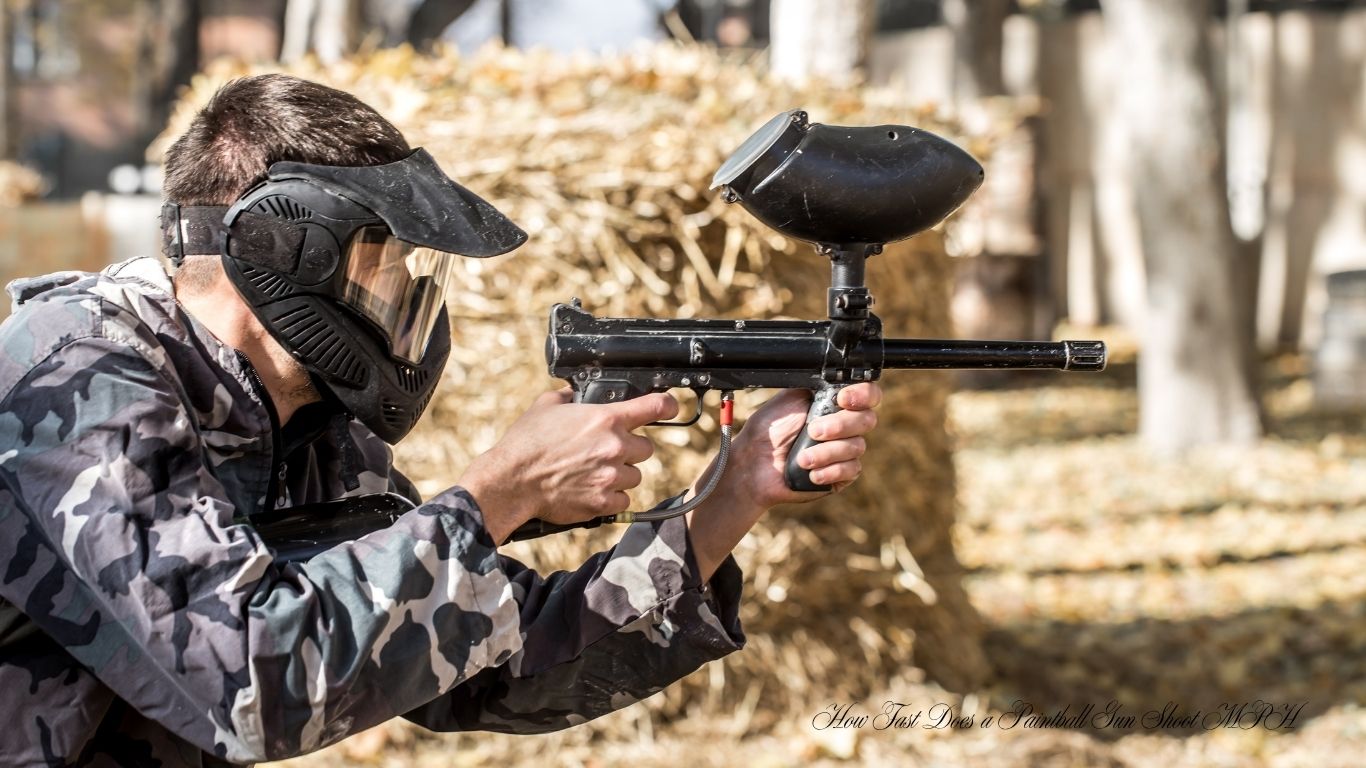In the world of paintball, speed is everything. Whether you’re participating in a fast-paced speedball game or stealthily maneuvering through the woods, the speed of your paintball gun can determine your success on the field. But how fast does a paintball gun shoot, really? How do you measure its velocity, and why does it matter?
Understanding the velocity of your paintball gun—measured in miles per hour (MPH)—is vital for more than just achieving a longer shot. It impacts your accuracy, your ability to outmaneuver opponents, and even your safety during the game. In this comprehensive guide, we’ll explore the science behind paintball speed, the factors that influence it, and practical tips to adjust and improve your marker’s velocity.
The Speed of Paintball Guns: How Fast Does a Paintball Really Shoot?
Paintball guns are designed to shoot paintballs at a range of speeds, usually between 170 to 200 miles per hour (MPH), translating roughly to 250 to 300 feet per second (FPS). At first glance, this speed may seem astonishing, but when you consider the nature of the game and the need for strategic shot placement, this velocity makes a lot of sense.
The speed at which your paintball gun shoots is influenced by several crucial factors. These include the type of paintball marker, the pressure used in the air tank, the barrel length, and the quality of the paintballs. Each of these elements plays a role in determining how fast a paintball will fly when you pull the trigger.
Why Speed Matters in Paintball
Paintball velocity is not just a matter of raw power. In fact, too much speed can be detrimental, while too little can limit your range. A faster shot can allow you to reach targets at greater distances, but it also increases the likelihood of losing accuracy. The challenge lies in finding the optimal balance between speed and precision to enhance your performance in different paintball scenarios.
In professional tournaments, the speed of paintball markers is regulated for safety reasons. Paintballs that travel too fast can cause injuries, and in extreme cases, they may break upon impact, compromising the game’s integrity. This is why the typical velocity limit in tournaments is set at 300 FPS, equivalent to roughly 200 MPH.
The Science Behind Paintball Velocity
Understanding the physics of how a paintball gun shoots is key to mastering your marker. When the trigger is pulled, compressed air is released from the gun’s air tank, propelling the paintball out of the barrel. The air pressure behind the paintball dictates its speed, and several factors come into play to influence this.
Air Resistance and Paintball Travel
Once the paintball leaves the barrel, it immediately encounters air resistance. This resistance slows down the paintball over time, causing it to lose speed as it travels toward its target. The faster the paintball is shot, the greater the resistance it faces, which can impact the trajectory and accuracy.
A faster paintball will likely experience more drag, causing it to veer off-course, especially in outdoor settings where wind conditions can vary. For this reason, some players prefer to use slightly slower speeds for better control, particularly in scenarios where accuracy is more important than sheer power.
The Role of the Barrel
The length and type of barrel on your paintball marker are crucial in determining how fast the paintball will travel. A longer barrel allows the air to push the paintball further, increasing its velocity. However, this also means that longer barrels can reduce accuracy if the barrel is too long or mismatched with the paintball’s size.
A shorter barrel, on the other hand, might provide faster speeds but at the cost of less stability. For optimal performance, it’s essential to select the right barrel length that balances both speed and accuracy.
Factors That Affect Paintball Speed
Several elements can affect how fast a paintball gun shoots. Understanding and adjusting these factors can help you optimize your gun’s performance.
Air Pressure and Efficiency
The pressure within your paintball gun’s air tank is one of the most significant contributors to velocity. When air is released into the chamber, it propels the paintball forward. Higher air pressure means more power behind the shot, leading to higher velocity. By adjusting your regulator, you can fine-tune the air pressure to achieve the desired speed. Keep in mind that an overpowered shot may lead to inconsistency and a decrease in overall accuracy.
Barrel Size and Type
The barrel of your paintball gun plays an essential role in determining both speed and accuracy. A high-quality barrel, well-suited to the size of your paintballs, reduces friction and allows the ball to travel faster. The bore size (diameter) of the barrel should match the paintball size closely to ensure that there is minimal resistance, which improves both velocity and accuracy.
Paintball Quality
Not all paintballs are created equal. Paintballs come in different sizes and are made from varying materials, all of which can influence how they travel when shot from a paintball gun. For example, poorly made or improperly stored paintballs might be slightly deformed, causing irregularities in their flight path and affecting speed. Using high-quality, perfectly round paintballs ensures better performance and consistency.
Adjusting Your Paintball Gun’s Speed
In competitive paintball, players often need to adjust their gun’s velocity to suit different game styles and environmental conditions. Here are some tips on how to optimize your gun for the best performance:
Regulate Air Pressure
One of the easiest ways to adjust your paintball gun’s speed is by regulating the air pressure. A high-end marker with an adjustable regulator allows you to fine-tune the pressure to achieve the perfect balance of speed and control. Too much pressure can cause the paintballs to fly too fast, making them less accurate, while too little pressure can reduce the gun’s velocity and effectiveness.
Upgrade Your Barrel
The barrel of your paintball marker is another essential component when it comes to velocity. A high-performance barrel designed for accuracy and reduced friction can help you achieve faster speeds without sacrificing precision. If you’re looking to enhance your speed, consider investing in an upgraded barrel that matches your playing style and paintball size.
Fine-Tune Marker Settings
Many electronic paintball markers come with built-in settings that allow you to adjust the firing rate and velocity. Experiment with these settings to find the right combination of speed and accuracy for your style of play. While some players prioritize speed for fast shots, others might adjust their settings for greater consistency and control.
FAQs
Q: How fast does a paintball gun shoot in MPH?
A: A paintball gun typically shoots at speeds between 170 to 200 MPH, with most markers firing at around 250 to 300 FPS.
Q: Can I adjust the velocity of my paintball gun?
A: Yes, you can adjust the velocity by modifying the air pressure, upgrading the barrel, and fine-tuning your marker’s settings.
Q: What’s the speed limit in paintball tournaments?
A: Most paintball tournaments set the velocity limit at 300 FPS (about 200 MPH) to ensure safety and avoid injury.
Q: Does a faster paintball shot affect accuracy?
A: Yes, faster shots can lose accuracy due to air resistance. Striking a balance between speed and precision is key.
Q: How can I improve my paintball gun’s speed?
A: You can increase your gun’s speed by upgrading the barrel, adjusting the air pressure, or fine-tuning your marker settings for optimal performance.
Conclusion
The speed at which a paintball gun shoots can significantly impact your game play. While shooting faster might seem like an obvious advantage, the key to success lies in finding the right balance between speed, accuracy, and control. By understanding the factors that influence paintball velocity and making the necessary adjustments to your equipment, you can enhance your performance on the field. Whether you’re adjusting air pressure, upgrading your barrel, or fine-tuning your marker settings, optimizing your paintball gun’s speed is essential for gaining an edge over your opponents. Remember, it’s not just about shooting fast; it’s about shooting accurately and consistently. With the right knowledge and equipment, you’ll be able to take your paintball skills to the next level.


Leave a Reply